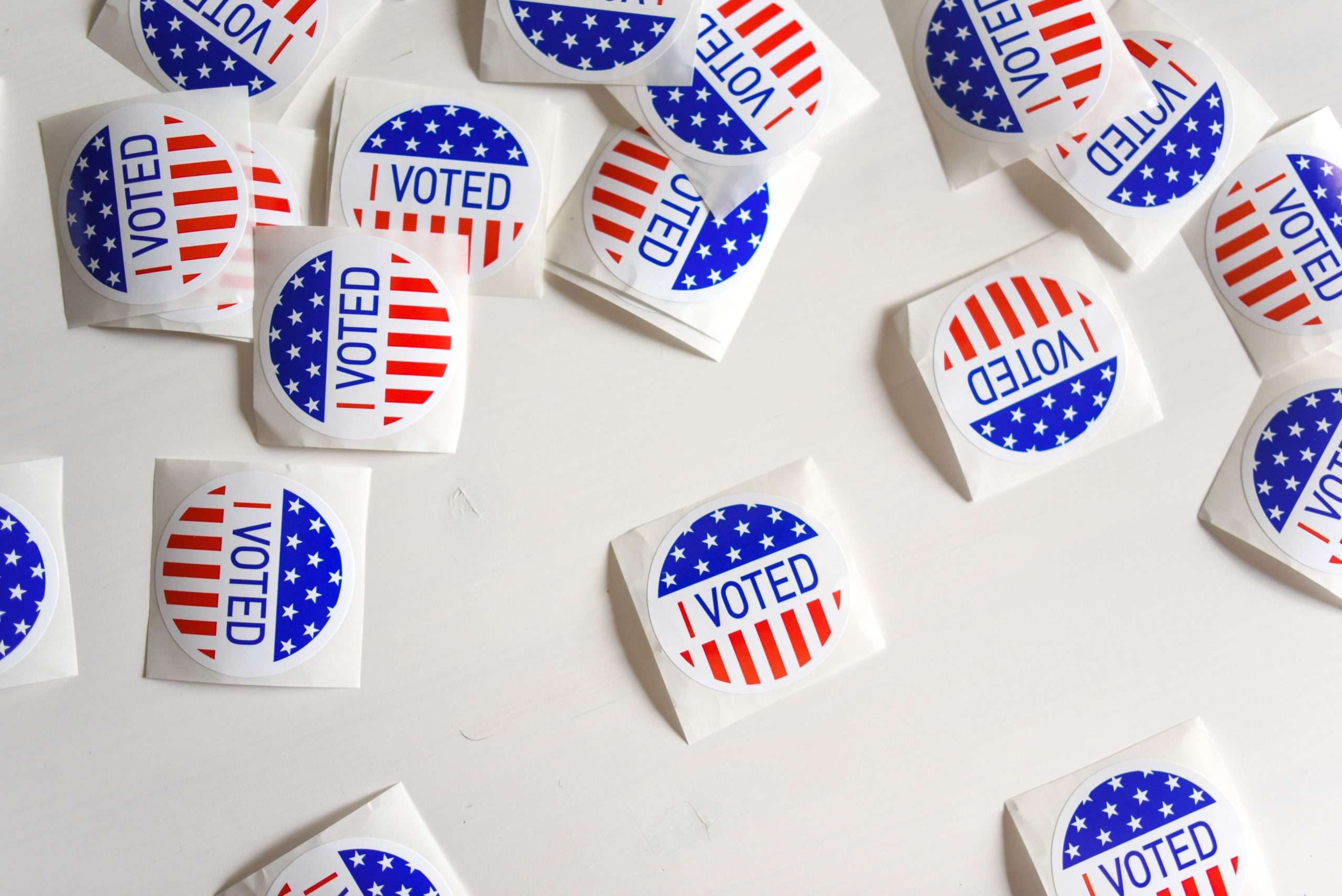When kids see political ads or hear adults talk about the election, it’s natural for them to be a little curious. My own daughter just asked the other day, “Mom, who’s Senator Joni Ernst, and are we for or against her?”
Surprised, I decided it was time to have a discussion about voting, the election process and politics. Naturally, I turned to my good friend Google to supply some answers. I couldn’t find much, so I decided to create my own article for UNest.
Here’s what you can do!
Stage a Household Election
Use these tips to help your child understand what goes on during an election. Naturally, you’ll have to use specific language depending on your child’s age. What’s good for one child may be like speaking Martian to another — every child is different!
I tend to treat my daughter like a mini adult (for better or worse) so I launched into it. She stopped me at “poll,” “constituent” and “incumbent.”
“I don’t know what you’re talking about, Mommy.”
Oops.
I decided we need to baaack wayyyy up. So here’s what we did: We staged an actual election.
Step 1: We read “Duck for President.”
Have you ever read “Duck for President” to your kids? It’s the cutest! So, Duck gets sick of all his farm chores and decides to take on Farmer Brown in an election. He decides to run for governor, then president, and kisses babies and even hits the requisite late-night talk show during his race for president.
Step 2: We made (and filled out) voter registration applications.
Everyone needs a voter registration card and my daughter wanted one, too. After digging out my own voter registration card, we made giant-sized voter registration cards. We knew we needed to put them in a safe place, so my daughter dug out her purse and wallet and stored them in her purse for the big election day.
Step 3: We put together polling stations and ballots.
You can’t make voter registration cards without having an election! We made ballots. Then we set up red, white and blue dividers and stuck Dad behind a table at the polling station to check our daughter’s registration card.
Tip 4: Voting time!
My daughter spent an inordinate amount of time voting on her homemade ballot in the ballot box. Everyone in the family voted, the ballots were counted and we announced the winner: Calla, our golden retriever!
If you get really crafty, you could add math into the lesson by graphing the number of votes each candidate receives, though we didn’t do that.
Explain Why Voting is Important
Follow the registration-and-voting plan above if you want to give your kids a really good idea of what an election is like. Here are some other ways to explain what voting is and why it’s important.
Explain Who Votes
Explain that today, people age 18 and older can vote in federal and state elections, though kids can’t vote.
Voting Wasn’t Always a Right for All Americans
In the past, land-owning white men were eligible to vote and white women, black people, and other disadvantaged groups of the time could not vote. Your kids will be amazed by these facts (my daughter was surprised that women couldn’t vote until 1920!) Here are a few more fast facts you can share:
- The 15th Amendment allowed black men to vote in 1869.
- Women were denied the right to vote until 1920, when the long efforts of the women’s suffrage movement resulted in the 19th Amendment.
- All American citizens over the age of 21 could vote by the mid-1960s.
- In 1971, the American voting age was lowered to 18.
Why Voting Matters
Every vote matters! Explain how that’s true by talking about the 2000 election — Al Gore versus George W. Bush. The election came down to a recount in Florida and landed in the Supreme Court and allowed the Supreme Court to make a decision on the outcome of the election.
Just to refresh your memory in case you forgot: Bush won Florida by 0.009 percent of the votes — by just 537 votes! If only 600 voters had shown up at the polls in Florida and voted for Gore in Florida, it would have changed the entire face of the presidency not just for 2000 to 2004, but through 2008!
You can also talk about how Donald Trump defeated Hillary Clinton in 2016 with a close Electoral College win. Although the election did not come down to a handful of votes in one state, it was still a hot race. Clinton won the popular vote by nearly three million votes, but the concentration of Trump voters in key districts in states like Wisconsin, Pennsylvania, and Michigan helped tally up enough electoral votes to win the presidency.
Explain that it can come down to just a handful of votes — and that’s why voting matters!
How the President Gets Elected
From the beginnings of a campaign to election night, it’s a long road for the president. Here’s how to explain it to kids.
Explain the Requirements
The U.S. Constitution requires a presidential candidate to be:
- A natural-born citizen of the U.S.
- A resident of the United States for 14 years.
- At least 35 years old.
Step 1: Primaries and caucuses occur first.
Candidates must win favor through campaigning throughout states. A primary is a state-level election where party members vote for the best candidate. Thirty-four U.S. states conduct a primary. On the other hand, a caucus is a local meeting where registered members of a political party gather to vote for their candidate. Explain which type happens in your state — primaries or caucuses.
Step 2: National conventions happen.
National conventions are like big parties — the party’s nomination is announced to the public. The elected delegates cast their vote and the person with the most delegates wins. Each party — the Democrats and Republicans — finalize their party during the national convention and each candidate announces his or her running mate.
Step 3: The General Election occurs.
When people cast their vote, they vote for a group of people called electors. These form the Electoral College.
The Electoral College
If the last election showed us anything, it’s the importance of the Electoral College. Article 1 of the Constitution determined that members of the Senate and House of Representatives would both be elected directly by popular vote. The president, however, is elected by the Electoral College — not a direct vote.
The Electoral College assigns a number of representative votes per state and this is based on state population. Why do we have an Electoral College?
It serves as a balance between the popular vote and using a state’s representatives in Congress to elect a president.
What happens if no candidate wins the majority of electoral votes? The vote then goes to the House of Representatives and house members choose. This has only happened once, when John Quincy Adams was elected President by the House of Representatives in 1824.
The Popular Vote
It’s hard for kids to understand why you just can’t tally all the votes (like you might do during your home election). It’s possible to win the Electoral College but still lose the popular vote.
The following presidents lost the popular vote but won the election:
- John Quincy Adams: 1824
- Rutherford B. Hayes: 1876
- Benjamin Harrison: 1888
- George W. Bush: 2000
- Donald Trump: 2016
Step 4: The new president is inaugurated.
The president-elect and vice president-elect must take an oath of office in a formal ceremony. The next inauguration will be in January 2021. The ceremony takes place for each new presidential term (every four years) even if the president continues in office for a second term.
Explain Politics
Now, explaining politics might be another challenging matter altogether. However, it might be a good idea, particularly because kids may see a lot of infighting and attack ads.
Tip 1: Gauge your child’s feelings.
Let’s say your child sees two politicians yelling at each other during a debate. He or she may be instantly curious, confused or feel any number of other feelings. Your child may have lots of questions. Get a sense of how your child feels about what she sees. If she doesn’t seem bothered by it, there’s no need to instill fear or confusion. Take her lead.
Tip 2: Comfort your child, if necessary.
However, if she’s upset, acknowledge the divisiveness she’s seeing. Explain that many people have very different ideas about how to run the country. Don’t let your own views color your reaction to her. Whether you feel as if the country is crashing around your feet or not, your child needs to feel comforted and safe.
Tip 3: Put a positive spin on politics: Get involved.
Do as much as you can to get your child involved in the political process and to help her understand she has a voice, even at a young age. Write a letter to a senator, volunteer to help with signage or whatever else you feel like you can do. This puts a positive spin on politics and reminds your child that here’s also a lot of good in the process — people can help each other.
Give Your Child a Mini-Education About Elections
Finally, try to draw parallels between everyday life. Compare the presidency to running your household or how your child’s principal runs the school. There are lots of ways your child can learn about the political process.
No matter what, bring it down to your child’s level and teach her that voting and being part of a democracy is what being an American is all about.
This material is for informational purposes only and should not be construed as financial, legal, or tax advice. You should consult your own financial, legal, and tax advisors before engaging in any transaction. Information, including hypothetical projections of finances, may not take into account taxes, commissions, or other factors which may significantly affect potential outcomes. This material should not be considered an offer or recommendation to buy or sell a security. While information and sources are believed to be accurate, UNest does not guarantee the accuracy or completeness of any information or source provided herein and is under no obligation to update this information.



